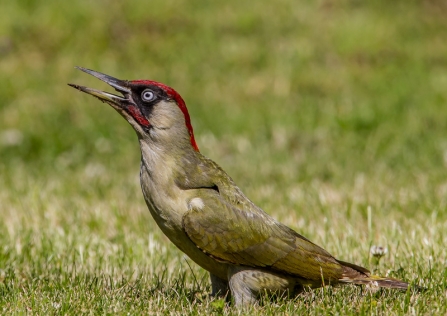Bittern in the reeds at Doffcocker Lodge (https://www.youtube.com/watch?v=0LcAgw3sHH4)
Video by Paul Thompson
Bittern in the reeds at Doffcocker Lodge (https://www.youtube.com/watch?v=0LcAgw3sHH4)
Video by Paul Thompson
Our volunteer Paul Thompson was over the moon to spot a bittern in the reeds at Doffcocker Lodge! We have been managing the reedbed here on behalf of Bolton Council since 2008, and it is wonderful to see our hard work – and the work of our fantastic volunteers – pay off. Paul said:
“I've been monitoring this site for about 13 years and was delighted to see the bittern. It’s great to know the conservation work done by Lancashire Wildlife Trust and other local groups is paying off. Keep up the good work LWT and who knows what I might see next, perhaps a Cetti's warbler or bearded tits.”
Our reedbed work at Doffcocker Lodge has also seen water rail and snipe move in.
Brockholes has been incredibly busy over the past few weeks. As well as having not one, but two bitterns spotted on-site, the warm February weather has sparked a mass emergence of pollinators, including species that have previously never been recorded on the reserve during February.
Mining bees have been emerging from the bee banks after our Conservation Team and Volunteer Interns set about scraping and tidying them up. Early mining bees, tawny mining bees, Clarke’s mining bees and Gwynne’s mining bees have been seen feeding on wildflowers like coltsfoot, and if that wasn’t enough, they have been joined by countless bumblebees and butterflies enjoying the early spring buffet:
Other exciting Brockholes wildlife sightings include frogspawn, mating ringed plovers, and lapwings scraping ready for the breeding season.

Green woodpecker by Andrew Morffew
It’s been a busy month in the Heysham area. Breeding season is in full swing for birds and mammals alike, with foxes spotted getting frisky out on the mud at South Shore.
Snipe and jack snipe are still on Ocean Edge salt marsh, while three Brent geese have been feeding around the slipway at Half Moon Bay. Most impressive of all is the 3,500-strong group of knot at the heliport!
One of the best ways to spot sea birds at Heysham is to look out over the ocean, and volunteers were rewarded with a fulmar. These birds were once a common sight during seawatches but are now scarce. Back on land, the green woodpecker that was heard yaffling in January has been at it again and has been heard regularly from the Heysham office. You can listen to their unusual call below.
But February wasn’t just about birds at Heysham – a male pale brindled beauty moth was found resting on the wall of Heysham office. They fly from January to March, searching for wingless females to mate with.
If you visited Heysham Nature Reserve, you may have been surprised to spot a few butterflies making the most of the sunshine. Peacock, comma and brimstone butterflies were all seen on the reserve.
Middleton Nature Reserve is still a haven for ducks at the moment, including good numbers of:
Other birds on-site during February included goldcrests, water rail, meadow pipit, green woodpecker and the secretive woodcock. Cetti’s warblers have been heard singing by the ‘No swimming’ pond and Central Marsh, and we’ve had a few sightings of stonechats.
What we’re really excited about, however, is the arrival of a chiffchaff and a little grebe. This is the first time we’ve seen either of these birds this year.

Male and female bearded tits by Stephen D'Cruze
Our fantastic staff and volunteers at Lunt Meadows have been busy preparing the reserve for breeding season, and a few pairs of oystercatchers have already set up territories on the newly created islands.
Waders are still feeding and roosting on the reserve in impressive numbers, including more than 50 black-tailed godwits. Barn owls and short-eared owls can be seen hunting on most evenings, and five great crested grebes were seen gobbling down impressively large fish on the pools!
Some of our most exciting Lunt Meadows sightings in February have included: